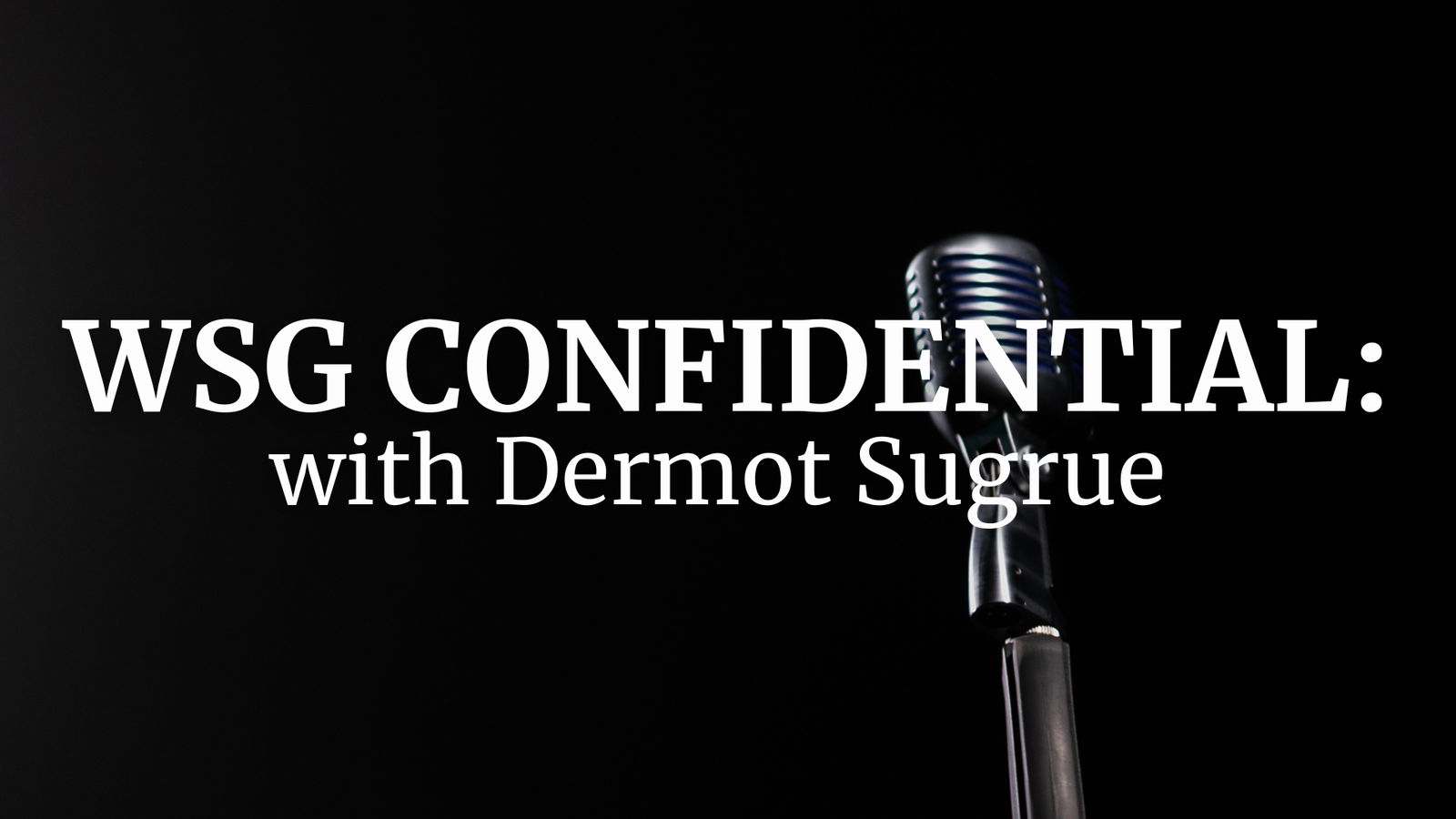BLOG
The Great Debate: What is the Future of Appellations? with Andrew Jefford and Robert Joseph
Kevin Day
Wine Education & Careers

Few consumer products in the world are more steadfastly focused on origin than wine. Think of the last great bottle of wine you enjoyed and, odds are, its place of origin featured prominently on the label.
Known as appellations, these defined areas of wine production have fostered a fanatical faithfulness to origin across the industry. Whether it is a Chianti Classico or a Chambolle-Musigny, a Napa Cabernet Sauvignon or a Chenin Blanc from Stellenbosch, how we interpret wine often comes down to how we interpret the place of origin.
While the general concept around the world is the same, the approach certainly is not. In the European sense, appellations define not only the boundaries of a region but the permissible production of wine (including grape varieties, yields, winemaking techniques and more).
“It is better to call non-European systems of this sort ‘Geographical Indications,’ since outside Europe it is generally only a producing zone which is defined,” says wine journalist and critic, Andrew Jefford. “Grape varieties and production methods are left up to the producer, and are a matter of free choice.”
Studying the differences and similarities among appellations, as well as their traditions and modifications, can lead to a lifetime of enjoyment — or frustration.
“The tail is vigorously wagging the dog,” says wine writer Robert Joseph, who is also a producer and wine analyst. He notes that too many places lack the distinction required to make appellations practical, useful and relevant to today’s consumer. Add in the not-so-little wrinkle of climate change, and the very purpose of appellations going forward becomes a rousing debate.
So: are appellations too “rooted to the spot” to be useful in a changing world? Or do they still offer producers the best chance to market their wines on a crowded global marketplace? We sat down with Andrew Jefford and Robert Joseph and hashed it out.
Please note that the full conversation is now available for free!

Kevin Day: Let’s start off with the basics. Andrew: what do you believe is the point of appellations, and are they still necessary?

Andrew Jefford: Kevin, before I answer your straightforward question and Robert contributes his thoughts, let's just define what it is we are talking about. To make it simple, let's say there are two sorts of "appellation" in the wine world.
What we could call European Appellations are modelled on the system developed in France between 1900 and 1935 (very fitfully, after many setbacks, quarrels and false starts) and subsequently instituted in most European wine-producing nations, with regional variants. These “names of controlled origin” specify not only a producing zone (in more or less detail), but also grape varieties and sometimes production methods. Those wishing to use the Appellation in question must follow these rules (generally laid down in France in something called a Cahier des Charges).
It is better to call non-European systems of this sort Geographical Indications, since outside Europe it is generally only a producing zone which is defined. Grape varieties and production methods are left up to the producer, and are a matter of free choice.
When we talk about “appellations” in a general sense in the wine world we might mean either sort of system, but to avoid ambiguity — and when there is a point of difference to be drawn between them — I will use either the term “European Appellations” or the term “Geographical Indications.”
The system was created in France to put an end to the problem of fraud, in the broadest sense. When France's vineyards were replanted after the phylloxera crisis, this was often done (during times of social and economic crisis) with productivist principles in mind, using high-yielding, low-quality vinifera and hybrid varieties. France’s national railway network made it easy to use Midi or even North African grapes, including grapes of hybrid origin, in the preparation of “noble” Northern French wines of historical origin like Champagne and Burgundy. Quality suffered; the great names became devalued; and worst of all growers who were producing authentic wines in those regions found they could no longer compete effectively. The principal pressure for reform came from growers themselves. In some cases (that of Charles Bouchard in Burgundy, for example) there was considerable counter-pressure from the merchant classes to leave things as they were. Bouchard was convinced he could offer his customers better and more consistent quality in lesser years by blending in wines from outside the region, and was convinced that customers were not unhappy with these wines when sold as pure Burgundies under the familiar names. (Given the generally dismal weather of the 1930s, he may well have had a point.)
Authenticity, then, was the primary reason for instituting appellations, so that customers could trust that the origin of the wines they bought was sincere, and so that growers working in those regions would be fairly remunerated.
Authenticity, then, was the primary reason for instituting appellations, so that customers could trust that the origin of the wines they bought was sincere, and so that growers working in those regions would be fairly remunerated. Notions of quality control came later — since it was quickly realised that an appellation alone was no guarantee of quality. Growers were often ill-educated, learning from their fathers (mistakes and all) until the last two decades of the 20th century; I'm sure Robert remembers the often horrible appellation wines of the 1970s, as I do. The reason for the rules and regulations contained in the Cahiers des Charges was to try to guide uneducated growers towards some basic production standards which would avoid abysmal quality and the loss of appellation reputation that implied. Yields were specified to stop growers over-producing; and harvest dates to stop growers picking too early, before the grapes were fully ripe; and so on.
That was the point of appellations … but now? Protecting authenticity, I believe, is still a key aim of appellations. Good basic Chablis (a prized name) tastes as it does because it comes from Chablis, so it is important to know that a bottle that says Chablis on it really does come from Chablis. That is called “telling the truth.” It matters in commerce, just as it does in politics, and in everyday life more generally.
Good basic Chablis (a prized name) tastes as it does because it comes from Chablis, so it is important to know that a bottle that says Chablis on it really does come from Chablis. That is called “telling the truth.” It matters in commerce, just as it does in politics, and in everyday life more generally.
The educative function of appellation regulations is now much less important than it once was, because growers are much better educated (and much better travelled) than their forebears.
But it is important to remember that an appellation is a communal property right, and a communal property right which works well is precious: it helps protect and support a community, and helps to keep the specialist agricultural activity of that community in good health.
Finally, remember that wine is a product sold across the globe, and commonly exported, yet wine production is highly atomised and fragmented. Appellations are therefore brands for the brandless. They are banners under which the products of tiny agricultural entities can make commercial sense in distant export markets. So, yes, for me appellations are still necessary.

KD: Robert ... Where do you stand on the status of appellations in the modern wine world?

Robert Joseph: I have very mixed feelings. After nearly six years of living in the Côte d’Or in the late 1970s/early 1980s, I absolutely believe in terroir — in the sense of soil, aspect and microclimate having a huge influence on wine character and quality. And yes, I do remember the dire quality of many of the genuine Burgundies of that time — and the atypicality of some of the wines sold by negociants of the time with smart appellations on the labels. In 1985, soon after my return to the UK, the late Auberon Waugh who wrote about wine for the Spectator (not the Wine Spectator, I should stress) made no apology for saying how much he preferred ‘old-fashioned’ Burgundy, produced with help of wine from further south.
I also totally understand why the French producers of the 1930s felt the need to protect their communes against fraudulent use of their names. However, nearly a century later, the tail is vigorously wagging the dog.
What has changed? First, like nations wanting their own airlines, every village seems to think it should have an appellation, preferably in an ideal world, adorned with a few Premiers and Grands Crus. Each of these appellations thinks it has as much right to be taken seriously as ones like Nuits-St-Georges and Chateauneuf du Pape which kicked the process off in the first place.
But how many people are making fake Cabard̀es? Chablis may indeed be a ‘brand for the brandless’ but to make the same claim for Cabardes is stretching the concept of a brand — as a name or logo that people know, recognise and are prepared to take trouble, and maybe pay a premium, to obtain.
Most wines — whether their labels proclaim the name of the producer or the place — are not brands, they are labels. Carrefour [a French multinational supermarket] currently sells an own-label Minervois called “Le Pas du Templier” for €2.15 a bottle. That doesn’t say much for Minervois’ brand value.
Reference to Carrefour raises the other crucial change in the wine world: distribution. In the 1930s, no one had invented the shipping container, the supermarket, the monopoly tender and the private label. So, we have hundreds — thousands — of appellations across the world, each of which has numerous — possibly hundreds — of wines bearing its name on their label. The nature of modern distribution inevitably leads to most appellations becoming commodities whose prices — like the one for that Minervois — are pulled down to the lowest on offer.
Defenders of the appellation system need to visit the annual bulk wine fair in Amsterdam and walk from exhibitor to exhibitor, following the price of, say, Bordeaux or Rioja, as it drops from one stand to the next. Low prices lead to weak marketing, which leads to weak branding, which facilitates the success of supermarket private labels, which help to pull down prices even further.
Defenders of the appellation system need to visit the annual bulk wine fair in Amsterdam and walk from exhibitor to exhibitor, following the price of, say, Bordeaux or Rioja, as it drops from one stand to the next. Low prices lead to weak marketing, which leads to weak branding, which facilitates the success of supermarket private labels, which help to pull down prices even further. The derisory cost of Carrefour’s Le Pas du Templier makes it hard for other users of the Minervois brand to charge more than €3 or €4, at margins that allow none of the marketing that would enable them to charge €5.
The low margins and weak marketing by individual producers leads to reliance on generic marketing. In theory this collective strategy might appear to be advantageous, but it brings its own problems. Promoting Cava or Prosecco, for example may simply help drive customers to buy the cheapest examples of those names Lidl and Aldi have on offer.
The other problem is that generic marketing encourages laziness. Producers delegate promotion to the local interprofession and fail to develop the skills they need to build their own brands.
Lastly, and possibly, most crucially, appellations bolster a caste system. So, an underperforming estate in Margaux can almost automatically charge more for its wine than a hard-working one in Moulis which, in its turn, will almost always get higher prices than an ambitious player in Médoc which will outrank one in Minervois.
Appellations work for some. For small regions with strong players (Pauillac, Priorat, Puligny) and for bigger ones that have established a reputation for themselves (Champagne, Napa). It doesn’t work for Corbières and Bordeaux Superieur.
Lastly – and admittedly the advent of Vin de France has eased this situation in recent years — European appellations (to use Andrew’s useful definition) stifle innovation. If you were in Bordeaux, you had to grow Cabernet Sauvignon and Franc, Merlot and Petit Verdot (and maybe some Malbec). Anyone who wanted to experiment with, say Touriga Nacional (ironically, now legal for the appellation thanks to climate change), had to sell the fruits of their labour without a grape name, region or vintage on the label.
It was as though the clock was stopped in whatever year the AOP was created. Imagine this being applied to food: we would all still be forced to eat the butter, cream and flour laden sauces of the 1950s and chefs like Fernan Adria would never have seen the light of day.
If the appellationists had been allowed to dictate the way we all dress, women would still be forbidden to wear trousers.

AJ: Robert makes some very good points here. Yes, a plethora of both European Appellations and Geographical Indications is an enormous challenge for consumers; yes, most appellations meet with very mixed success; yes, the caste system of a fixed non-negotiable bulk or commodity price for appellations is deeply regrettable; yes, some of the rules and regulations drafted for European Appellations stifle creativity, and hold back regional development. But I don't agree that 'the clock is stopped'. These systems are constantly evolving, and reputations are constantly changing, but because you only get one go a year in making wine it takes a lot of time for change to come about. A decade is nothing; twenty years is a start; fifty years is probably what most appellations require.
There is also nothing in itself wrong with a declining reputation, just as there is nothing wrong with a growing one. All wine-growing is an agricultural experiment; not every experiment is destined to succeed. I still think that most growers in Corbières are better off with their appellation than they would be in a world in which that appellation didn't exist, and they had to make their way in a global market from commercial ground zero. In most cases, if you want to do your own thing and ignore the appellation altogether, there is a legislative framework to allow you to do that. And because consumers cannot understand and learn the name of every appellation, it doesn't mean that they can't get any intellectual purchase on appellations at all — most consumers learn a few names of wines they like, and are quite happy with that, and that's fine.
NEXT PAGE (30%): The Relationship Between Appellation and Terroir
Please note that the full conversation is now available for free access! Log in or Create a Free Account to read the full conversation.
In the full transcript, you can read Andrew and Joseph's opinions on
- The Relationship Between Appellation and Terroir
- The Business of Appellations
- Appellations: Inhibiting or Encouraging Creativity?
- Controlling Standards
- Natural Wine and “Typicity”
- The Best Defense Against Fraud?
- Appellations and Quality Pyramids
- Protection for Tradition and Varieties?
- Appellations and Climate Change
- A Question of Relevance



